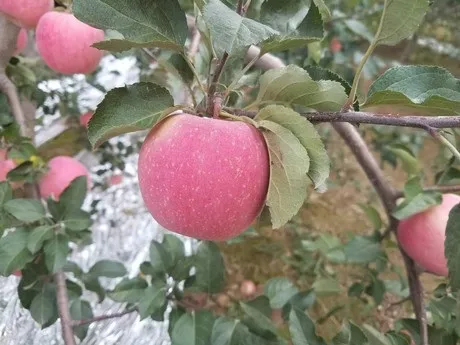Because of climate change, droughts are expected to become more recurrent, thus making the plants’ endurance to this phenomenon a key aspect for the survival of many varieties. Water scarcity is the cause of many serious harvest losses, apple trees included.

China dominates the global apple production as they can count on large farming surfaces – other than being the biggest fresh fruit exporter. The Shandong and the Shaanxi provinces are the main apple producing regions. They contribute to 50% (20 million tons) of the Chinese apple production. Yet, water scarcity is one of the major problems in the Shaanxi province. Therefore, China is trying to identify those genes involved in the water use efficiency in drought conditions in order to optimise the varietal selection schedule.
Researchers from the Northwest A & F Yangling University explained, “We farmed 35S:MhYTP2 transgenic apple plants with a moderate long-term water deficit (80 days) in order to evaluate their water use efficiency and to investigate the mechanism potentially involved in their drought resistance. The MhYTP2 is a gene cloned by the Malus hupehensis which encodes an RNA-binding protein. We characterised this variety in such a way that we could examine its role in water use efficiency. We did this both in good irrigation and drought conditions. This gene’s over-expression made the water use efficiency stronger within the transgenic plants, which accumulated more biomass than non-transgenic wild plants”.
This water use efficiency increase is probably given by the improvement of the photosynthetic rate, of the root absorption, by the reduction of the stomatal opening induced by the high level of ABA and by the activated ethylene signalling pathway. The MHYTP2 gene resulted to be predominantly expressed in the apple tree roots.
Researchers concluded, “In our grafting experiments we noticed that the photosynthesis rate, the instant water use efficiency and the root water potential were definitely higher when the 35S:MhYTP2 plants were used as rootstocks, rather than as nests. Our results showed that the MhTPY2 gene plays a crucial role in the roots rather than in the aerial parts of the plant. This means that this gene can be used to improve the water use efficiency through apple rootstocks and, potentially, through other crops’ rootstocks which are suitable for grafting”.
Source: Changhai Liu, Tianli Guo, Na Wang, Qian Wang, Yangchun Xue, Minghui Zhan, Qingmei Guan, Fengwang Ma, 'Overexpression of MhYTP2 enhances apple water-use efficiency by activating ABA and ethylene signaling', 2019,Environmental and Experimental Botany, Vol. 157, Pag. 260-268.
